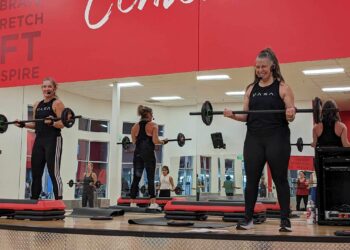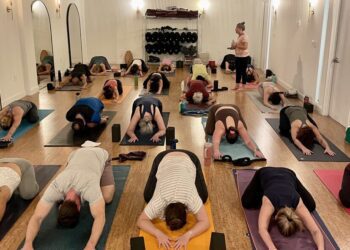As stay-at-home restrictions continue to relax around the world, gym owners face the challenge of reopening while minimizing health risks to clients and staff. This is not a return to business as usual. The new normal at fitness facilities will require smaller classes, less equipment and enhanced cleaning procedures.
Reimagine
The first step in rebooting a fitness business is to reimagine what a class looks like. In the past, high-intensity interval training (HIIT) classes might have included 40 clients transitioning between 10 stations and sharing equipment. That type of programming will not be viable for the foreseeable future. Instead, focus on delivering a dynamic workout that offers each client their own equipment and a dedicated, socially-distanced space for the duration of the class.
Reimagining also extends to check-in, pre and post-class socializing, and cleaning. Prior to reopening, gym owners should walk through the entire process to anticipate and minimize points of contact, whether that involves hiring a staffer to handle check-in, adding touchless water stations, or increasing cleaning frequency.
Rearrange
Clients should see a difference in the gym setup when they return. Those visual cues can subconsciously reinforce a gym’s social-distancing strategy. In studios with rooms dedicated to equipment like bikes or suspension trainers, that will mean removing or disabling some of the equipment to create a six-foot radius of space around each client.
A new floor plan could require some creative problem solving. For example, a cycling studio owner might not have storage capacity to remove 20 bikes from the floor. An alternative could be flipping the temporarily decommissioned bikes upside down, or adding tape between the handlebars and seat.
For open-space classes like aerobics, strength conditioning, HIIT or bootcamp, consider marking and numbering socially-distanced zones with tape, and directing clients to their assigned zone. For gyms taking this approach, the client should have all the equipment they need in their zone at the start of class to prevent unnecessary travel and contact in the room.
Reduce
Downsizing is critical to reopening safely. That means fewer clients per class, fewer classes per day (plus longer cleaning breaks between classes) and less equipment in each class. Think about programming that facilitates those objectives.
For example, even if a studio has enough equipment to give each client their own kettlebells, dumbbells, bands and medicine balls for a class, properly cleaning that much equipment after class takes a lot of time. Programming with just one or two pieces of equipment per client will enable a more efficient post-class cleaning process.
Gym owners are anxious to reopen and clients are excited to return, but everyone must adapt to keep studios safer. Creating and communicating new policies around class sizes, spacing and equipment will make the process smoother for everyone involved. Lean on partners in the industry for support and guidance — no one is doing this alone. Vendor partners are having conversations with industry professionals every day, and are ready and willing to share their learnings with you.
Contact TRX to learn more about designing your gym or studio by emailing sales@trxtraining.com or visiting their website.










